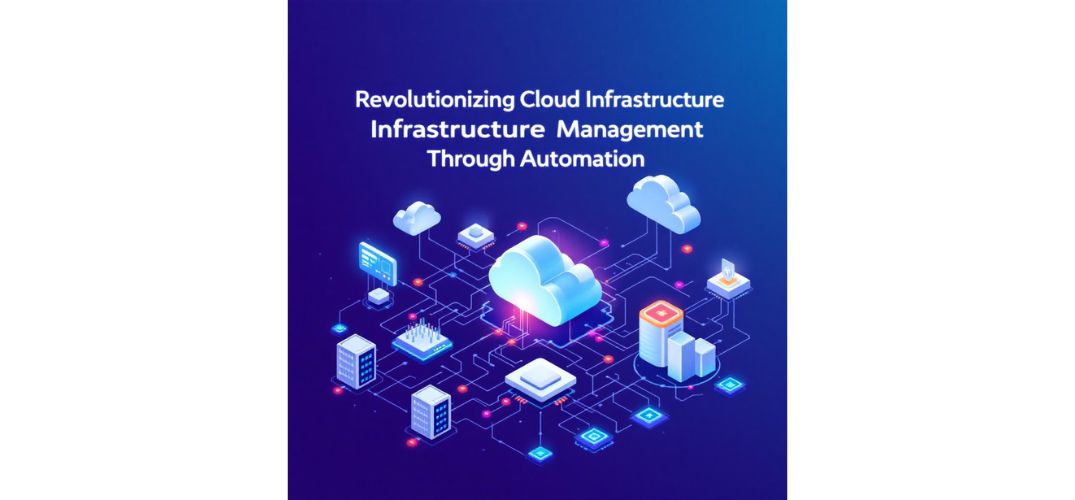In an era where cloud computing has reshaped the way organizations manage and scale their digital infrastructure, automation has become the cornerstone of modern cloud strategies. Perumalsamy Ravindran, a leading voice in cloud computing innovation, has outlined how advanced tools like Terraform, Infrastructure as Code (IaC), and automated security frameworks are transforming how multi-cloud environments are managed. This article explores the pivotal role these innovations play in enabling organizations to achieve scalability, security, and operational efficiency.
Embracing the Power of Infrastructure as Code (IaC)
Cloud computing has brought significant benefits, but it also introduces complexities in managing multi-cloud environments. One transformative practice to address these challenges is Infrastructure as Code (IaC). IaC allows teams to manage and provision cloud infrastructure through code, significantly reducing the time and potential for errors compared to manual processes.
He highlights that IaC, particularly in continuous integration and deployment (CI/CD) pipelines, can reduce deployment time by 31% and infrastructure-related incidents by 28%. The declarative approach ensures consistent, repeatable deployments, making it easier to manage complex cloud environments. Teams that adopt IaC practices experience faster recovery from failures and increased deployment success rates.
Terraform: The Driving Force Behind Multi-Cloud Automation
Terraform, praised for its provider-agnostic architecture and robust state management, is one of the most widely adopted IaC tools. Its ability to manage infrastructure across multiple cloud platforms with a consistent workflow makes it a favorite among developers. Terraform’s support for complex dependencies and resource tracking ensures smooth operations, even in large-scale, multi-cloud environments.
Terraform’s widespread adoption by nearly 43% of developers working with cloud infrastructure illustrates its critical role in simplifying multi-cloud management. By providing a unified interface across different cloud providers, Terraform helps eliminate the operational overhead of managing separate platforms, ensuring organizations maintain efficiency and control.
Security and Compliance Automation in the Cloud Era
With the complexity of cloud environments increasing, security has become a paramount concern. He outlines how security automation, through tools like Policy as Code, is instrumental in managing consistent security standards across multi-cloud environments. Automated compliance checks, vulnerability assessments, and security scanning tools help organizations meet regulatory requirements without the need for manual intervention.
By integrating security and compliance automation into cloud management systems, organizations can mitigate risks, enhance their security posture, and reduce the chance of human error, ensuring that security is not compromised across the multi-cloud infrastructure.
Optimizing Multi-Cloud Architectures for Scalability
As organizations expand their cloud footprints, the need for integrated management systems that span multiple cloud environments becomes critical. He stresses that modern multi-cloud architecture designs are built on principles of resource abstraction, network optimization, and unified identity management. These strategies provide organizations with improved visibility, security, and control across all cloud platforms.
Standardizing resource definitions and network configurations across various cloud providers simplifies complex cloud infrastructures, improving both performance and scalability. Through these optimized architectures, organizations can seamlessly scale their operations without compromising performance or security.
Automation Workflow: Streamlining Operations for Success
Automation workflows in cloud environments significantly enhance operational success. Elite performers deploy software more frequently and recover faster from incidents. He highlights the importance of automation in achieving operational excellence. Teams using modular configurations and clear resource dependencies improve deployment frequency and success rates, leading to faster recovery times, lower failure rates, and more reliable software delivery. Optimizing deployment pipelines boosts both software delivery and operational performance. As cloud adoption grows, tools like Infrastructure as Code, Terraform, and automated security frameworks pave the way for a more efficient and secure cloud future. Automating infrastructure management and security compliance empowers organizations to scale operations while reducing risks, inefficiencies, and improving overall system reliability.
In conclusion, these innovations will continue to shape the future of digital infrastructure management, offering organizations the tools they need to thrive in an increasingly complex cloud environment. Through continuous automation and security integration, companies can unlock new levels of operational efficiency, scalability, and security. Perumalsamy Ravindran’s insights underscore how cloud computing is not just about adopting new technologies, it’s about rethinking how organizations operate in a multi-cloud world, improving overall system reliability and business agility.





























